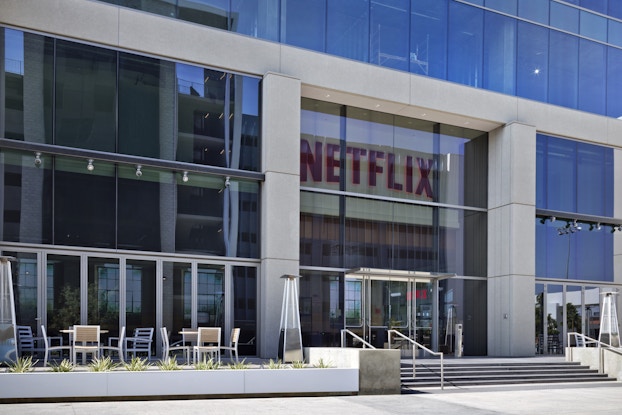
In response to changes in consumer demand and the overall business landscape, many companies choose to pivot into new areas. Though the pivot may seem like a recent trend, there is a long history in the United States of businesses radically changing strategies to find success. Over the years, many of the nation’s largest companies have reinvented how they operate, changing their core services and products, target audiences, or distribution strategies.
Here are 13 massively successful companies that reinvented their core businesses.
[Read more: 10 Essential Things Successful Businesses Have in Common. Does Yours?]
Amazon
Amazon, one of the world’s highest-valued companies, originally started as an online retailer of physical books. When operations began in July 1995, it promoted itself as “Earth’s Biggest Bookstore” and focused on competing with sizable in-store book retailers such as Barnes & Noble and Waldenbooks. This approach was moderately successful, with Amazon carrying more than 2.5 million different book titles. When Amazon went public in 1997, there was little indication it would eventually dominate e-commerce and cloud computing, as it does today.
In 2000, Amazon launched its Marketplace so third parties could also list items online, which dramatically increased Amazon’s selection and revenue. The third-party marketplace, combined with Amazon directly selling more than just books, made Amazon the go-to online retailer. Later, in 2006, Amazon began offering cloud computing services that continue to lead the industry.
That same year, the company launched the Amazon Kindle, which sold out in less than six hours during its November 2006 release. Amazon continued to diversify its portfolio over the next decade, acquiring major companies like Audible and Whole Foods, while also launching new offerings like Amazon Instant Video and even a physical store. As of the fourth quarter of 2022, the online retailer boasts a net worth of $460.98 billion.
American Express
American Express, a financial services giant, was founded in 1850 with an emphasis on express mail, transporting valuable goods, stock certificates, and currency throughout its home state of New York and later expanding to other states. Throughout the late 1800s, the company added money orders and traveler’s checks to its portfolio. However, in the mid-1900s, American Express reinvented itself and what it was best known for by offering a charge card that extended credit to consumers and businesses. As of 2022, the company had more than 133 million credit cards in use across the United States and internationally.
Chipotle
One of the most recent major business reinventions — that of fast-food player Chipotle Mexican Grill — occurred in 2020. Chipotle has long been known for its counter-service approach, where customers walk in and order custom burritos, bowls, tacos, and other items. However, in 2020, the company significantly invested in high-margin drive-thru pickup lanes that it calls “Chipotlanes.” These drive-thru lanes exist primarily for mobile pickup orders, which means more customers can be served in a short amount of time.
In November 2022, the fast-casual eatery launched its 500th Chipotlane, citing it as critical to Chipotle’s long-term strategy. Chipotle continues to see rapid and consistent growth, with a projected 250 new restaurant openings and 7,000 jobs created in 2023. Additionally, the restaurant plans to open 285–315 additional locations in 2024.
Corning
Corning, a world leader in glass, ceramics, and industrial material manufacturing, initially found success in the mid-to-late 1800s by mass-producing glass for Thomas Edison’s lightbulbs. The company continued to innovate and reinvent what it could do with glass. It notably created the Pyrex durable cookware line, as well as the optical fiber that paved the way for internet telecommunication adoption.
In 2010, Corning created its proprietary Synthemax, an animal-free surface that can be used for stem cell cultures. It acquired Mediatech, Inc., the following year, and much of the Discovery Labware business the year after that. However, Corning is perhaps best known for its development of the hard-to-break Gorilla Glass used on technology products, such as the iPhone, iPad, and Apple Watch. The ongoing partnership between Corning and Apple has led to new advancements like the Ceramic Shield, designed to be stronger than any existing smartphone glass to date.
IBM
For much of its history, IBM has been one of the world’s top manufacturers of computing machines, computer equipment, and mainframes. But in the early 1990s, the company had to change course because its hardware business faced steep competition. In 1993, the company posted a staggering $8 billion quarterly loss. To turn the company around, executives made the bold decision to abandon hardware areas such as computer chips, hard drives, and printers. Instead, IBM would focus on software, IT consulting services, and computing research, and this move brought the company back to profitability and improved its reputation.
IBM’s spirit of reinvention continued with its 2020 decision to split into two companies: IBM, which would focus on cloud computing and artificial intelligence, and Kyndryl, a new company that would provide managed IT services. Though Kyndryl initially faced losses — impacting its parent company in the process — IBM remains an industry giant, with a brand value of over $87 billion as of 2023.
Netflix
Netflix, one of the world’s top streaming entertainment providers, started in 1998 as a company that allowed consumers to rent and buy physical DVD movies. The company added a subscription offering in 1999 where people could rent as many DVDs as they wanted, receiving rentals in the mail. After seeing enormous success with its physical DVD rentals, executives decided in 2007 to focus on streaming content that could be accessed instantaneously via the internet and to move away from physical media.
Netflix’s decision to invest in streaming and de-emphasize DVD rentals changed the entire entertainment landscape: In 2022, a Nielsen study found streaming services had more viewers than cable or broadcast television. Since launching its streaming services, Netflix’s offerings have only grown, acquiring streaming rights to films produced by major companies like Sony and DC. Today, the company is worth more than $210 billion.
However, in the mid-1900s, American Express reinvented itself and what it was best known for by offering a charge card that extended credit to consumers and businesses.
Play-Doh
One of the strangest business pivots ever might be that of the popular children’s modeling clay Play-Doh, which was first sold as a cleaner that could remove coal residue from wallpaper in the 1930s. As oil and gas furnaces became more popular in the 1950s, demand fell for the product and the makers considered getting rid of the business. The owners heard about a schoolteacher using the clay in arts and crafts classes in their hometown of Cincinnati. After realizing the potential of a children’s toy, the company quickly pivoted to a more colorful product. By the end of the 1950s, the clay had become a toy that one could buy in stores nationally. Today, Play-Doh is owned by Hasbro, and more than 3 billion cans of the product have been sold.
[Read more: 10 Key Talents Most Great Entrepreneurs Have]
Slack
Slack, a popular business collaboration and chat application, began as a company called Tiny Speck that made a computer game called Glitch. The game itself was a flop and was shut down in 2012. However, one aspect of the game that stuck was the interactive, colorful chat functionality that players and employees used. Once Glitch officially shut down and the team realized the powerful collaboration tool had on its hands, it launched the Slack app in 2013. Slack grew quickly, and the company went public in 2019. The company surpassed 169,000 paying customers in 2022 and boasts about 20 million active daily users in 2023.
Starbucks
When the hugely successful coffee chain Starbucks opened in the early 1970s, its few stores in Seattle only sold coffee beans and coffee-making equipment. The former Starbucks director of marketing and retail operations Howard Schultz convinced the owners of Starbucks to sell it to him and a few investor partners to transform it. Schultz pivoted the stores into coffeehouses where you could buy prepared coffee as well as beans. The company thrived under Schultz’s leadership, and he eventually stepped down as its chief executive in 2000. Schultz then reinvented the company again when he returned as CEO in 2008. In his second stint as CEO, Schultz pushed Starbucks to embrace technology to engage customers better — he recently retired and will remain “lifelong Chairman Emeritus.” Today, the Starbucks app is the most regularly used loyalty rewards app among major restaurant chains.
YouTube
Google-owned video-streaming service YouTube is among the most visited websites globally, with billions of videos being consumed there daily. However, the site was started in 2005 by co-founders Jawed Karim, Steve Chen, and Chad Hurley as a dating website. They even took out ads offering to pay people $20 a pop to post videos of themselves. The approach failed, but as users of the site began to post whatever videos they felt like uploading, the founders embraced the idea. They revamped the website to make it easier for people to upload nearly anything. Google purchased the site in November 2006 for $1.6 billion in stock. As of June 2022, users upload more than 500 hours of video on the site every minute.
Apple
At its inception in 1976, Apple predominantly sold top-of-the-line personal computers and found success in the market. By the 1990s, however, the now-tech giant was close to bankruptcy. Upon Steve Jobs’ return in 1997, Apple focused its efforts on the innovation and design of new products, starting with the iMac. The sleek computer saw immediate success, launching the company into a new era of growth.
From the iPod to the iPad to the now-ubiquitous iPhone, Apple developed various new offerings for its growing customer base over the years. It continues to build out those products and services with new technological, functional, and design elements. Today, Apple remains a major player in the market, reporting a net income of nearly $97 billion in the 2023 fiscal year.
General Motors
Since its founding in 1908, auto manufacturer General Motors (GM) dominated the industry for decades. However, rising competition from foreign manufacturers eventually led to a bailout in 2009 before the company entered bankruptcy. GM downsized and reorganized, emerging again as a public company in 2010 and reclaiming its status as the top car manufacturer in the country. Under current CEO Mary Barra, the company remains profitable, investing in new technologies like electric vehicles and self-driving cars.
LEGO
LEGO was born during the Great Depression, offering wooden toys by master carpenter Ole Kirk Kristiansen. The toy company started creating plastic bricks in 1949, and in the early 1960s, it stopped production of wooden toys altogether. Over the decades, LEGO continued to expand its offerings — including theme parks and a new product line based on “Galidor,” a TV show partially funded by the brand — but ultimately faced financial difficulties in the 2000s.
With the company in crisis, LEGO refocused the business to return to its core product line. LEGO began to create products based around this core, including sets based on popular TV and movie franchises, as well as video games with LEGO characters. The company has regained its popularity and profitability —it’s currently the third-largest toy manufacturer globally, with products available in upwards of 130 countries.
This article was originally written by Sean Ludwig.
CO— aims to bring you inspiration from leading respected experts. However, before making any business decision, you should consult a professional who can advise you based on your individual situation.
CO—is committed to helping you start, run and grow your small business. Learn more about the benefits of small business membership in the U.S. Chamber of Commerce, here.








